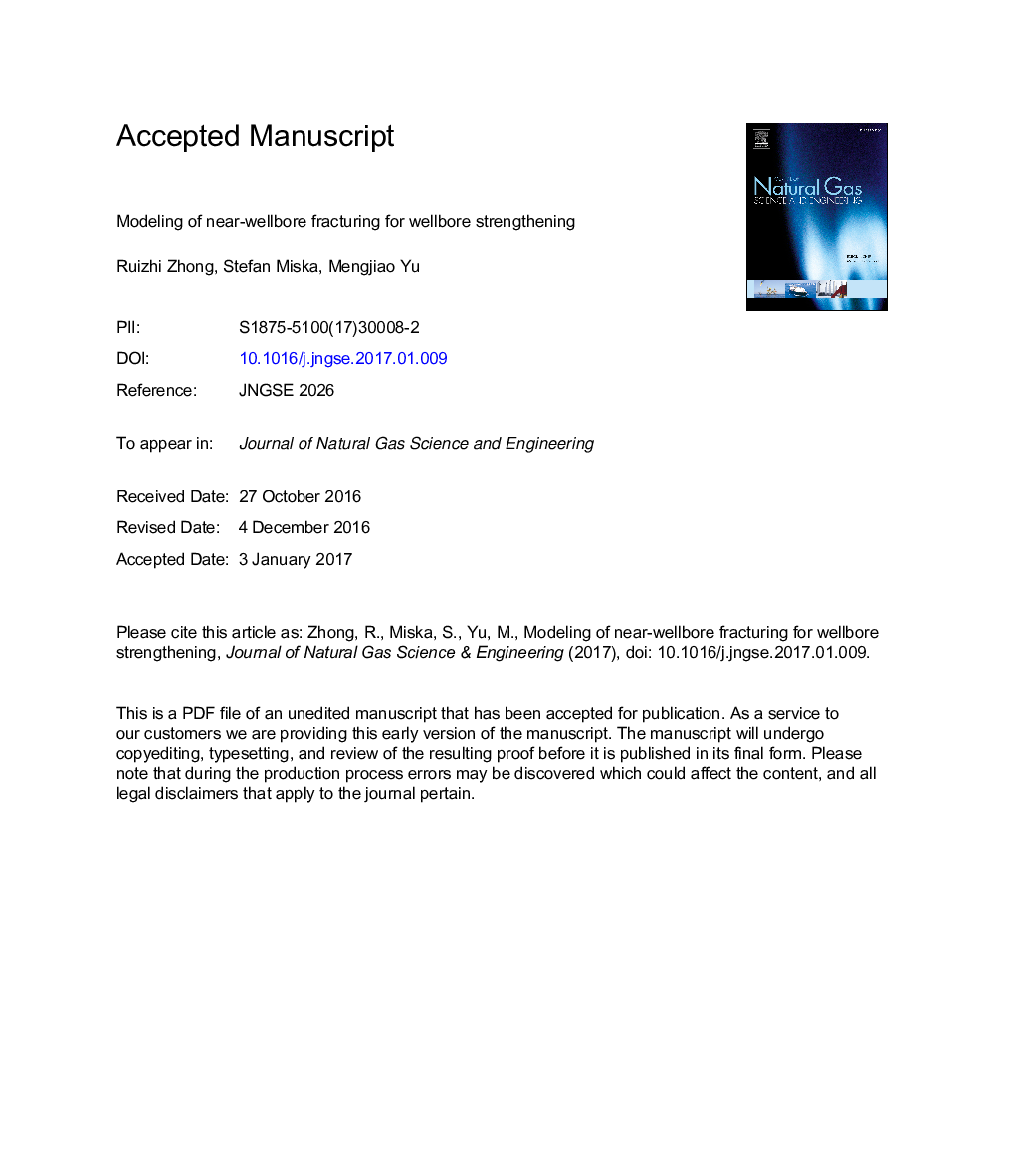| Article ID | Journal | Published Year | Pages | File Type |
|---|---|---|---|---|
| 5485187 | Journal of Natural Gas Science and Engineering | 2017 | 19 Pages |
Abstract
While drilling through depleted or partially depleted reservoirs, one may encounter a series of problems (e.g., lost circulation, non-productive time, etc.) due to narrow mud weight window (MWW). Fracture-based strengthening techniques used in the industry effectively increase fracture reopening pressure (FROP) and ultimately reduce the cost of associated problems. However, traditional analytical and numerical studies using these techniques do not consider the time effect and usually ignore the fluid dynamics. Thus, these deficiencies may result in inaccurate wellbore strengthening operations if no proper fracture diagnostic techniques are available to acquire the real-time fracture geometry. In this paper, a quasi-static, dislocation-based fracture model is extended using fluid mass conservation with leak-off. A fixed dimensionless fracture coordinate system is employed and a numerical simulation procedure is developed. The model is capable of predicting real-time fracture geometry (both fracture width and length) from given wellbore conditions. Hence, it could provide optimal particle size distribution (PSD) selection for wellbore strengthening applications. Two case studies are performed and results reveal different fluid controlling mechanisms during the fracture propagation, which are fluid storage in fractures and fluid leak-off to surrounding formation. Drilling through low permeability reservoirs (e.g., tight gas reservoirs or shale reservoirs) is different from drilling in conventional reservoirs because fast propagation of induced fractures may interact with natural fractures and result in severe lost circulation. This model is of critical importance in designing wellbore strengthening operations during drilling.
Related Topics
Physical Sciences and Engineering
Earth and Planetary Sciences
Earth and Planetary Sciences (General)
Authors
Ruizhi Zhong, Stefan Miska, Mengjiao Yu,
